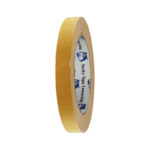Safety regulations established by organisations such as the Occupational Safety and Health Administration (OSHA) and the American National Standards Institute (ANSI) set rigorous standards for workplace safety. Compliance with these regulations is essential for protecting employees and avoiding costly penalties. In this blog post, we’ll explore how safety or directional tapes play a crucial role in meeting OSHA and ANSI standards, ensuring a safe and compliant work environment.
Understanding OSHA and ANSI Standards:
Occupational Safety and Health Administration (OSHA):
- Mandate: OSHA is a federal agency under the United States Department of Labor, established to ensure safe and healthy working conditions for employees. Its primary objective is to prevent workplace injuries, illnesses, and fatalities by enforcing standards and regulations.
- Standards: OSHA standards cover a wide range of workplace safety topics, including hazard communication, personal protective equipment (PPE), electrical safety, machine guarding, and more. These standards are legally enforceable and apply to most private sector employers and employees in the United States.
- Enforcement: OSHA conducts inspections, issues citations for violations, and imposes penalties on employers who fail to comply with safety regulations. Employers are required to provide training, maintain records, and implement safety programs to ensure compliance with OSHA standards.
American National Standards Institute (ANSI):
- Mandate: ANSI is a private, non-profit organisation that facilitates the development of voluntary consensus standards for various industries in the United States. Its mission is to enhance competitiveness, improve safety, and foster innovation through standardisation.
- Standards: ANSI develops and publishes voluntary standards in collaboration with industry stakeholders, government agencies, and other organisations. These standards cover a wide range of fields, including construction, manufacturing, telecommunications, healthcare, and more. ANSI standards address product specifications, performance criteria, testing methods, and safety practices, among other topics.
- Recognition: While ANSI standards are voluntary, they are widely recognised and adopted by regulatory agencies, industry associations, and businesses as best practices for ensuring quality, safety, and interoperability. ANSI standards are often referenced in federal regulations, including those enforced by OSHA, as benchmarks for compliance.
Significance of OSHA and ANSI Standards:
- Safety and Health: OSHA and ANSI standards are crucial for protecting the safety and health of workers across various industries. By establishing clear guidelines and requirements, these standards help prevent workplace accidents, injuries, and illnesses, ultimately saving lives and reducing healthcare costs.
- Legal Compliance: Compliance with OSHA standards is mandatory for most employers in the United States, ensuring that workplaces meet minimum safety requirements and regulatory obligations. ANSI standards, while voluntary, provide industry-accepted benchmarks for quality and safety, enhancing product performance and market competitiveness.
- Industry Best Practices: OSHA and ANSI standards reflect industry best practices and the latest advancements in technology, research, and safety science. By adhering to these standards, organisations can demonstrate their commitment to excellence, innovation, and continuous improvement in workplace safety and operations.
Compliance with OSHA and ANSI Standards Using Safety Tapes:
Safety tapes are instrumental in achieving compliance with OSHA and ANSI standards, particularly in the following areas:
Hazard Communication:
OSHA’s Hazard Communication Standard (29 CFR 1910.1200) requires employers to provide clear and understandable information about chemical hazards in the workplace. These tapes with colour-coded designs help identify hazardous areas, chemical storage locations, and other potential dangers, facilitating compliance with hazard communication requirements.
Floor Marking:
OSHA’s Walking-Working Surfaces Standard (29 CFR 1910.22) mandates that workplaces have clear and visible markings to delineate safe walking paths, hazardous areas, and emergency escape routes. ANSI standards, such as ANSI Z535, provide guidance on safety colours and floor marking practices. Safety two-sided tapes with bold colours and high-visibility designs help meet these requirements by clearly marking pathways, storage areas, and other designated zones.
Emergency Preparedness:
Both OSHA and ANSI standards emphasise the importance of emergency preparedness and evacuation procedures. OSHA’s Exit Routes Standard (29 CFR 1910.36) requires employers to provide clearly marked and unobstructed exit routes. Safety or PVC tapes with reflective or glow-in-the-dark properties help meet these requirements by marking emergency exits, escape routes, and assembly points, enhancing visibility during evacuations.
Best Practices for Compliance:
To ensure compliance with OSHA and ANSI standards using adhesive workplace tapes, consider the following best practices:
Choose Compliant Tapes:
Select tapes online that meet OSHA and ANSI standards for colour, visibility, and durability. Look for tapes specifically designed for hazard identification, floor marking, and emergency signage applications.
Install Tapes Properly:
Follow manufacturer guidelines for installing strips or tapes, ensuring they adhere securely to clean and dry surfaces. Proper installation techniques, such as surface preparation and edge sealing, help maintain tape integrity and effectiveness over time.
Conduct Regular Inspections:
Regularly inspect marking tapes for signs of wear, damage, or detachment. Replace damaged or worn-out tapes promptly to maintain compliance and visibility in the workplace.
Provide Employee Training:
Educate employees on the significance of these tapes, their role in hazard identification, and proper procedures for recognising and responding to safety markings. Training empowers employees to actively contribute to a safe and compliant work environment.
Conclusion:
Safety workplace tapes are essential tools for achieving compliance with OSHA and ANSI standards, enhancing hazard communication, floor marking, and emergency preparedness in the workplace. By selecting compliant tapes from My Tape Store, installing them properly, conducting regular inspections, and providing employee training, organisations can create a safer work environment while meeting regulatory requirements. Remember, compliance with safety regulations is not just a legal obligation—it’s a commitment to protecting employees and promoting a culture of safety and well-being.















